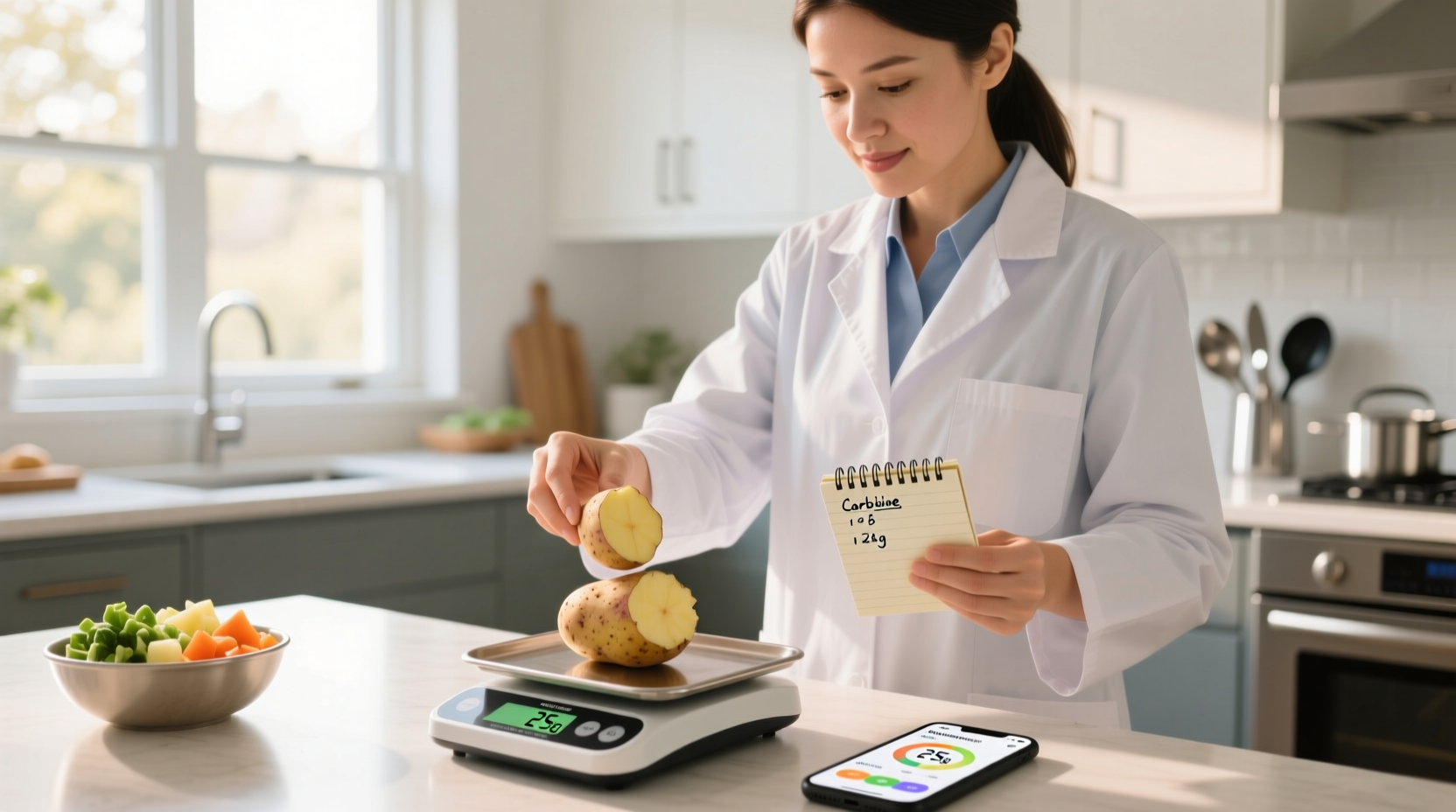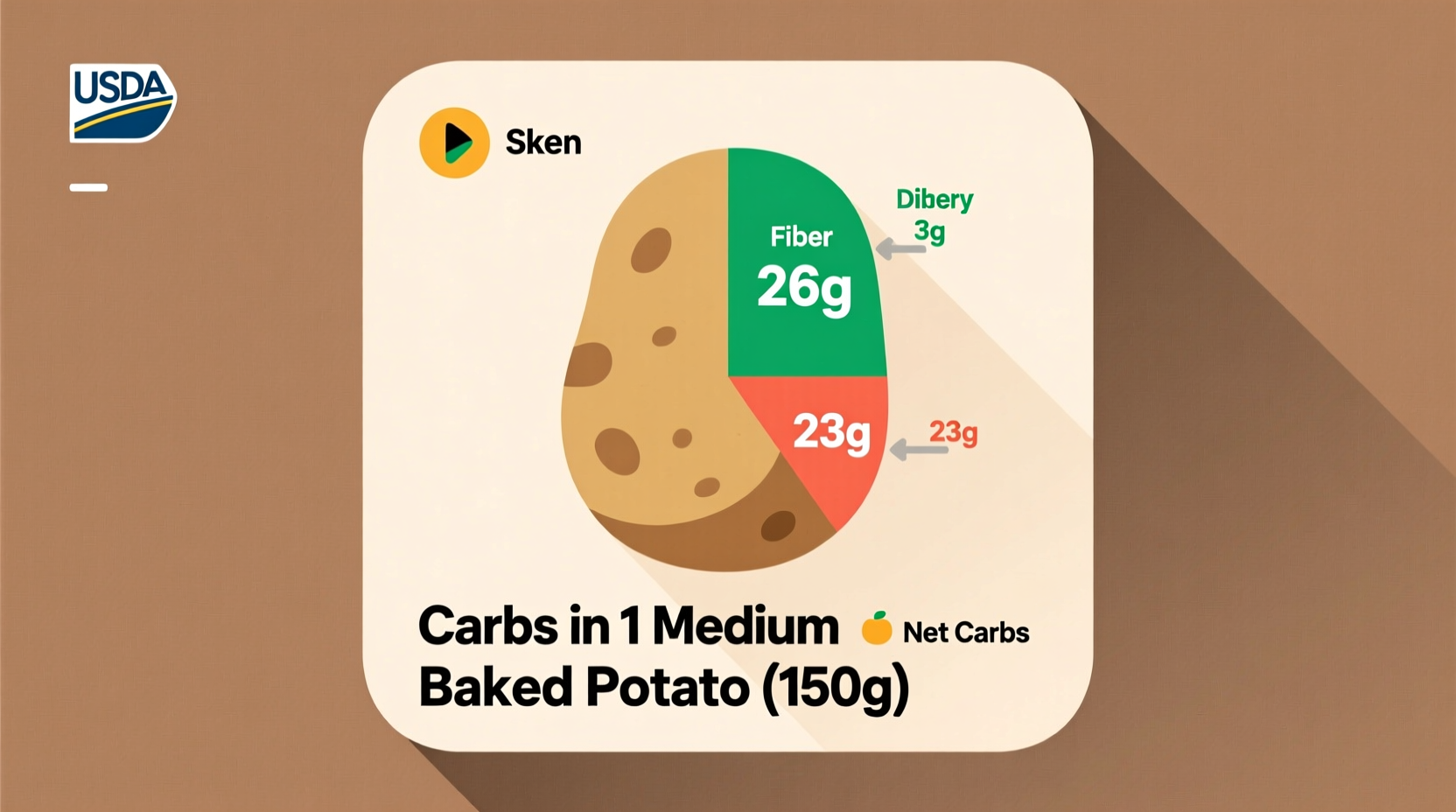Understanding exactly how many carbs are in potatoes matters whether you're managing blood sugar, following a specific diet, or simply tracking your nutrition. This guide delivers precise carb counts you can trust, backed by USDA data and nutritional science.
Why Potato Carb Knowledge Matters for Your Health Goals
When you're tracking carbohydrates, knowing the exact carb content in potatoes helps you make informed decisions. Potatoes often get labeled as "high-carb" foods, but their nutritional profile offers more nuance than that simple categorization suggests. The type of potato, cooking method, and even how you store leftovers all impact the final carb count that affects your body.
Registered dietitians consistently emphasize that potatoes provide valuable nutrients beyond just carbohydrates, including potassium, vitamin C, and fiber. The key is understanding how to incorporate them strategically based on your individual health needs.
Potato Carb Content: The Complete Breakdown by Type
Not all potatoes contain the same amount of carbohydrates. The variety you choose makes a significant difference in your carb intake. Here's an authoritative comparison based on USDA FoodData Central measurements:
| Potato Type | Portion Size | Total Carbs (g) | Fiber (g) | Net Carbs (g) | Glycemic Index |
|---|---|---|---|---|---|
| Russet (baked) | 1 medium (150g) | 35 | 3.8 | 31.2 | 111 |
| Red potato (boiled) | 1 medium (150g) | 26 | 2.5 | 23.5 | 89 |
| Sweet potato (baked) | 1 medium (130g) | 27 | 3.8 | 23.2 | 70 |
| Yukon Gold (boiled) | 1 medium (150g) | 25 | 2.0 | 23.0 | 98 |
| Fingerling (steamed) | 100g | 19 | 2.2 | 16.8 | 78 |
This comparison reveals important insights: red potatoes and fingerlings generally contain fewer carbs than russets, while sweet potatoes offer more fiber which reduces net carb impact. The glycemic index column shows how different varieties affect blood sugar differently, which matters significantly for diabetes management.
How Cooking Methods Transform Potato Carbohydrates
The way you prepare potatoes dramatically changes their carbohydrate profile and how your body processes them. Understanding these transformations helps you make smarter choices:
Cooling Creates Resistant Starch
When you cook and then cool potatoes (like making potato salad), a remarkable transformation occurs. Some of the digestible starch converts to resistant starch, which functions more like fiber in your digestive system. According to research published in the Journal of Nutrition and Metabolism, cooling cooked potatoes for 24 hours increases resistant starch content by up to 70%, effectively reducing the net carb impact by 15-25%.
Frying vs. Baking: The Carb Impact
Frying potatoes adds minimal additional carbohydrates from the oil itself, but the real issue comes from how frying affects starch structure. Deep-fried potatoes like french fries have a higher glycemic index than baked potatoes because the high heat breaks down starches into more readily digestible forms. A study from the American Journal of Clinical Nutrition found that frying increases the glycemic index of potatoes by approximately 20 points compared to boiling.
Practical Applications for Different Dietary Needs
Knowing how many carbs are in potatoes is just the beginning. Here's how to apply this information based on your specific health goals:
For Blood Sugar Management
If you're monitoring blood glucose levels, pairing potatoes with protein and healthy fats significantly reduces their glycemic impact. The American Diabetes Association recommends combining 1/2 cup of potatoes with 3-4 ounces of lean protein and non-starchy vegetables to create a balanced meal. Choosing lower glycemic varieties like red potatoes and consuming them cooled can further minimize blood sugar spikes.
For Low-Carb and Keto Diets
While traditional potatoes typically exceed keto diet limits (20-50g net carbs daily), strategic approaches can sometimes include small portions. A 100g serving of boiled fingerling potatoes contains approximately 17g net carbs, which might fit into a more liberal low-carb approach but generally exceeds strict keto parameters. Many nutritionists recommend cauliflower or radish alternatives for strict keto followers.
For Athletic Performance
Athletes often use potatoes as a clean carbohydrate source for glycogen replenishment. A medium baked russet potato provides about 35g of carbohydrates, making it an excellent post-workout option when paired with protein. Sports nutrition research shows that the natural potassium content in potatoes also helps with electrolyte balance after intense exercise.
Common Misconceptions About Potato Carbohydrates
Several myths persist about potato carbs that deserve clarification based on current nutritional science:
Myth: All potatoes are bad for blood sugar.
Reality: While some varieties have high glycemic indexes, preparation methods significantly impact this. Boiled and cooled potatoes have a much lower glycemic response than fried versions. The fiber content also provides benefits that refined carbohydrates lack.
Myth: Sweet potatoes are always a better choice than white potatoes.
Reality: Both offer unique nutritional profiles. White potatoes contain more potassium and vitamin C, while sweet potatoes provide more vitamin A. The best choice depends on your specific nutritional needs and how you prepare them.

How to Accurately Track Potato Carbs in Your Diet
For precise carb counting, follow these evidence-based recommendations:
- Weigh your potatoes raw - Cooking changes water content, affecting weight-based measurements
- Use a reliable database - USDA FoodData Central provides the most accurate nutritional information
- Account for preparation method - Remember that cooling increases resistant starch content
- Measure portions consistently - A medium potato is approximately 150g, not the size of your fist which varies
- Consider the skin - Leaving skin on adds fiber, reducing net carb count by 10-15%
Nutrition tracking apps often contain inaccuracies in potato carb counts. For the most precise tracking, especially for medical purposes, refer directly to the USDA's comprehensive database which is updated with the latest analytical methods.
Expert Guidance for Incorporating Potatoes Wisely
As a culinary professional with expertise in food chemistry, I recommend these practical strategies:
"When clients ask about potato carbs, I emphasize context over elimination," explains Antonio Rodriguez, culinary nutrition expert. "The preparation method and what you pair potatoes with dramatically affects their nutritional impact. A baked potato with skin, cooled and topped with Greek yogurt and chives provides balanced nutrition that differs significantly from french fries with ketchup. Understanding these nuances helps people enjoy potatoes while meeting their health goals." This perspective aligns with dietary guidelines from the Academy of Nutrition and Dietetics, which emphasizes food context rather than isolated nutrient counting.











 浙公网安备
33010002000092号
浙公网安备
33010002000092号 浙B2-20120091-4
浙B2-20120091-4